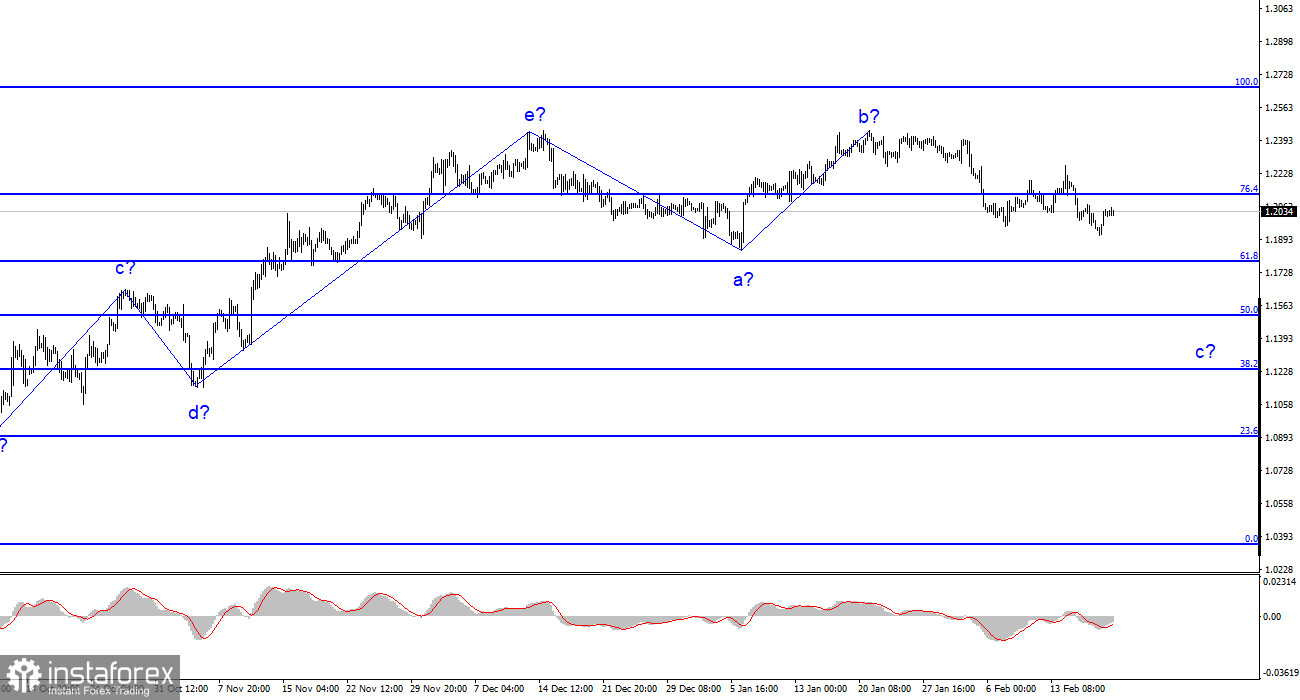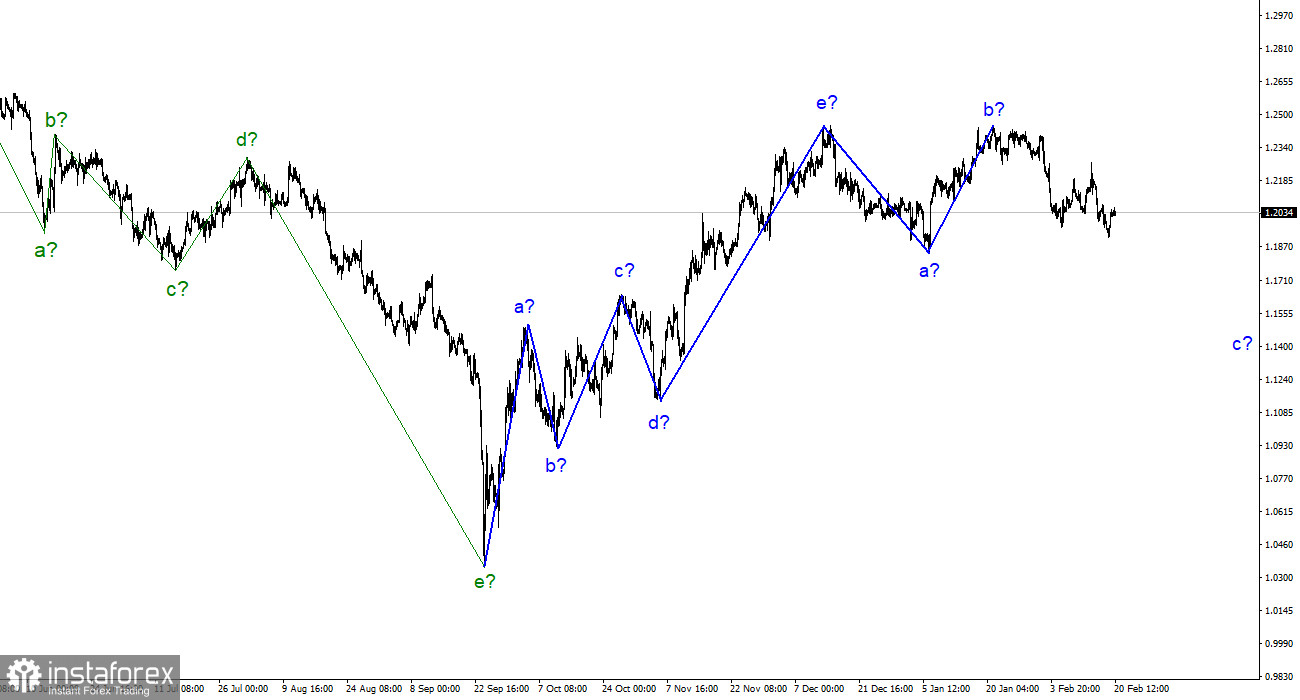
Although the wave analysis for the pound/dollar pair now appears extremely complex, clarifications are not necessary. The wave patterns for the euro and the pound differ somewhat, but both point to a decrease. Our five-wave upward trend section has the pattern a-b-c-d-e and is most likely already finished. I anticipate that the downward section of the trend has started to take form; it will have at least three waves. Wave B appeared to be unnecessarily long, but it did not cancel. So, it is presumed that a wave development process has started with a downward part of the trend, the targets of which are situated below wave a's low. In other words, at least 100–200 points less than the going market rate. Although it's too soon to speculate, I believe wave c may end up being deeper and that the entire downward section of the trend may potentially adopt a five-wave pattern. It took a long time for the instrument to start moving quotes away from the peaks reached, although it had been on the verge of restarting the development of an upward trend segment. Because wave c hasn't finished yet, the low of assumed wave a hasn't been broken.
Due to the lack of background news on Monday, the exchange rate of the pound/dollar pair remained unchanged. There is frequently no news on Mondays, which causes the market to trade quite slowly. Yet, there won't be many significant events this week, making it challenging to rely on a strong range of movements. The wave pattern clearly shows that the pair is taking its time declining. According to this, the pound is currently in line for a moderate decrease, and when the pair has built three waves downward, it may even start developing a new upward trend section. This hypothetical situation can, of course, be changed numerous times as long as the news context continues to support both the demand for the US dollar and the pound sterling.
The most intriguing data for this week will be made public tomorrow. Business activity indices aren't crucial statistics, but they nonetheless affect the mood of the market. Also, there won't be any additional significant events this week. A new set of statements by FOMC members is unlikely to boost demand for the US currency because we already know that the Fed's "hawkish" stance will only get stronger. It is unlikely that buyers of the pound will be pleased if business activity indices in the UK once more reflect a decline. Contrarily, there may be a surge in business activity across all sectors in the US, which could result in more demand for the dollar. Recently, the US economy has been in good shape. Despite a minor decrease, the most important economic indices are still in the lead. Based on this, I continue to think that the US dollar will increase. The wave analysis now corresponds with such a scenario.
Conclusions in general
The development of a downward trend section is implied by the wave structure of the pound/dollar pair. Currently, sales with targets at the level of 1.1508, or 50.0% Fibonacci, might be taken into account. The peaks of waves e and b could be used to place a Stop Loss order. Wave C might be shorter in duration, but for the time being, I anticipate a minimum 100–200 point decline.
The image resembles that of the euro/dollar pair at higher wave scales, but there are still minor distinctions. The upward correction section of the trend has now been finished. If this presumption is true, then we must wait for the development of a downward section to continue for at least three waves with the possibility of a decrease in the area of figure 15.






















